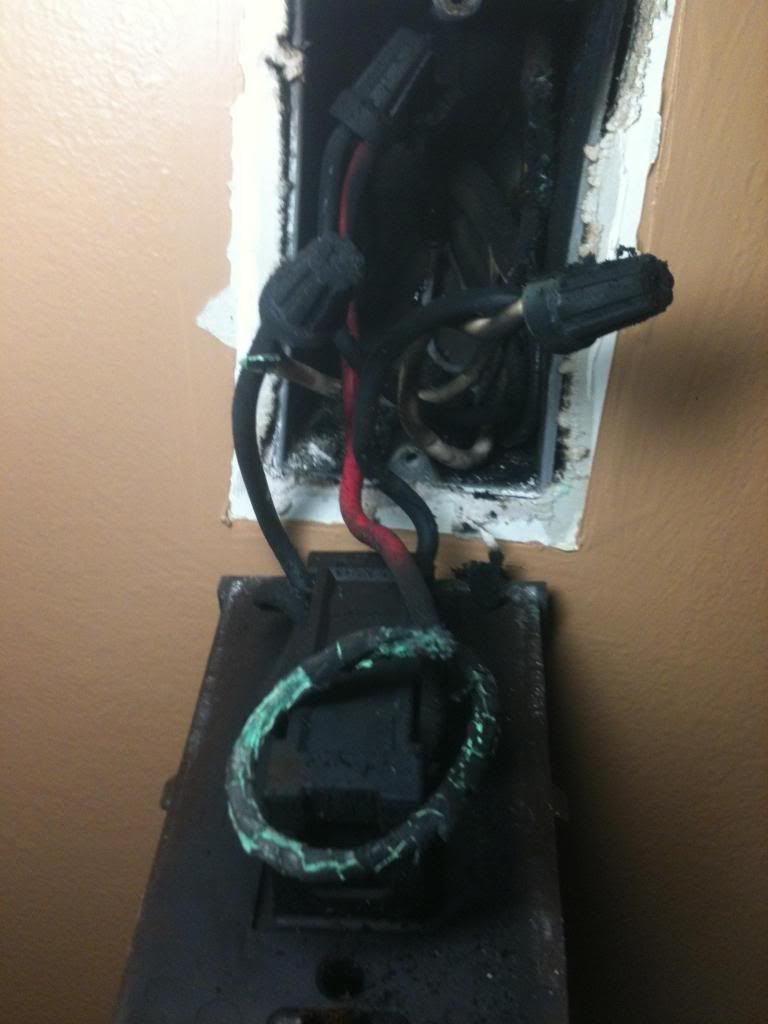RLyons
Senior Member
- Location
- Changed for anonymity
Going through a 90's era condo today to find some electric baseboards not working. I am constantly finding 240V wall mount thermostats which can have up to 3 2-wires and the thermostat itself jam packed into the box. I removed the cover and cranked up the thermostat to see a ominous blue glow coming from behind the box. Shut the breaker off, removed the ts to find this:  The grey plastic box along with the back of the ts has turned completely black. I've seen my share of melted wires and nuts but none with this amount of soot within the box. What are the chances fire making it outside the box? It doesn't seem likely to me. So are electrical fires primarily created from junctions or the wires beyond them?
The grey plastic box along with the back of the ts has turned completely black. I've seen my share of melted wires and nuts but none with this amount of soot within the box. What are the chances fire making it outside the box? It doesn't seem likely to me. So are electrical fires primarily created from junctions or the wires beyond them?
 The grey plastic box along with the back of the ts has turned completely black. I've seen my share of melted wires and nuts but none with this amount of soot within the box. What are the chances fire making it outside the box? It doesn't seem likely to me. So are electrical fires primarily created from junctions or the wires beyond them?
The grey plastic box along with the back of the ts has turned completely black. I've seen my share of melted wires and nuts but none with this amount of soot within the box. What are the chances fire making it outside the box? It doesn't seem likely to me. So are electrical fires primarily created from junctions or the wires beyond them?